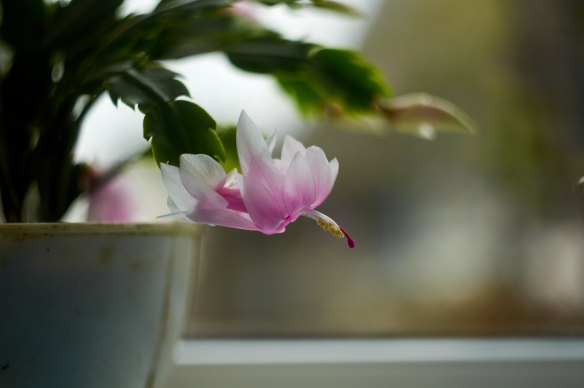What the winter solstice means for your gardening plans
Good news! Last night was the winter solstice, the longest night and shortest day of the year. It all gets lighter and brighter from here – at least until the summer solstice on December 22. The difference between now and then is about four and half hours of daylight if you live in Sydney, and a little over five hours if you live in Melbourne.
While some people are severely impacted by day length – in the form of Seasonal Affective Disorder – for most of us, short days are a lifestyle issue: porridge for breakfast seems much more appealing in the dark, walking home after work does not. For many of the plants in our gardens though, day length is critical.

The zygocactus is a popular winter-flowering plant.Credit: Getty
The ability of plants to adjust their physiology by detecting night and day length is called photoperiodism. Not all plants have this ability; many focus their physiological attention solely on temperature and water instead. But of those that do monitor day length, some respond to shortening or lengthening days by going dormant. Others put resources into bulb or tuber production and some are prompted to flower. Of the latter, most flower when days are at least 12 hours long, but some are triggered to flower by long nights.
This is counter-intuitive. We tend to think of flowering plants as responding to the sun, but for short-day plants, it is long periods of uninterrupted darkness that generates flowering. These plants include annuals like primula and polyanthus, some chrysanthemums and some varieties of strawberries. This is the reason that winter is the delicious peak of Queensland strawberry season. The short-day varieties that are grown on the Sunshine Coast are sparked to flower by the lengthening nights of late autumn, while the warm sunny days promote ripening of the resultant berries.
The popular winter-flowering zygocactus (Schlumbergera truncata) plays night length off against temperature, demanding longer hours of darkness the higher the temperature. At an ambient temperature of 22C, the plant requires eight weeks of 15 hours of uninterrupted darkness to promote flowering. So, if your indoor zygocactus has not budded this winter, either turn the heating down or turn the lights off earlier.
Loading
The queen of the night-loving form of photoperiodism is the florist poinsettia (Euphorbia pulcherrima), which requires two weeks of nights with at least 14 hours of uninterrupted darkness, as well as sunny days, to produce flowers and the brilliant red bracts that are the star attraction. The predictability of a poinsettia’s demands makes them easily manipulated in glasshouses with blackout curtains, and consequently, they are commercially produced for sale as indoor colour, year-round.
For edible gardeners the switch at winter solstice from lengthening nights to lengthening days is the solution to dill and coriander going to seed. Both of these herbs register day length and respond to the longer nights after the summer solstice by trying to grow fast and set seed before the onset of winter. Seed sown in late summer and autumn produces leggy, weak plants rushing to flower, and irritated gardeners – but if planted after the winter solstice (and after frosts if they occur where you live) gardeners can expect sturdy plants and a long season of leaf.
Make the most of your health, relationships, fitness and nutrition with our Live Well newsletter. Get it in your inbox every Monday.
For all the latest Life Style News Click Here
For the latest news and updates, follow us on Google News.
